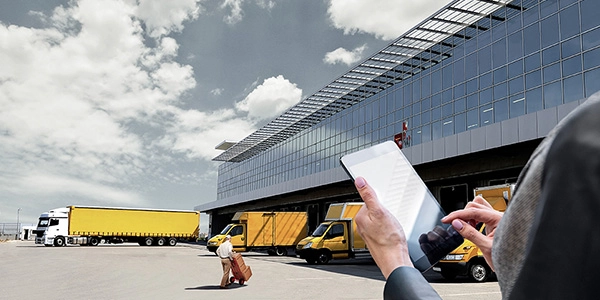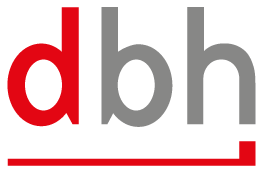Centralized clearance - manage customs processes centrally from a single source
Article 179ff of the Union Customs Code has paved the way for centralized customs clearance (formerly single authorization). And even if not everything is working smoothly yet, AES 3.0 has brought further movement to the topic.
Central customs clearance – the basic idea is simple
Regardless of where the goods are located, the customs declaration is submitted to the centrally responsible customs office. The goods are presented at the authorized location in another EU member state. If an inspection is necessary, this is also carried out by the customs authority on site at the authorized place of goods. Example: the export declaration is made at the main customs office in Dortmund responsible for you and specified in the authorization (supervising customs office), but the goods are presented at the place of production in the Czech Republic (presentation customs office). From there, your goods can then be sent directly on their journey.
More efficiency, cost savings and legal certainty – clear added value
More security
Customs expertise is bundled in one place, enabling stricter monitoring and enforcement of customs regulations. This helps to ensure that potential errors or infringements are identified or corrected at an early stage and fines and legal problems can be avoided.
Lower costs
By consolidating customs activities at a central location, costs can be saved that would otherwise be incurred with decentralized processing. This includes personnel costs, infrastructure costs and expenditure on customs software.
Until now, separate interfaces and software had to be implemented and maintained in each member state in order to submit customs declarations with all member state-specific information. This is a labor-intensive and cost-intensive burden for European companies. A standardized software is now sufficient for processing. Especially companies that want to handle all processes across the group in central ERP systems can therefore benefit massively from the simplification.
Anyone who has used the support of customs brokers or forwarding agents for customs clearance abroad can now hand over exports to the forwarding agents in advance and save time and money in the subsequent export processing.
More efficiency
Customs clearance via a central customs department enables a standardized and coordinated approach to the customs process. The multitude of documents and data records for each country is a thing of the past with Centralized Clearance. This leads to greater efficiency, as processes are rationalized and duplication of work is avoided.
The AEO certification required to use the procedure also offers foreign branches the opportunity to benefit from additional authorizations and simplifications.
Simplified dealings with customs authorities
The simplified dealings with the customs authorities should also not be neglected. This is because communication takes place with your own known customs office as the only point of contact and in just one language. And the audits are also only carried out by a customs authority.
This is how central customs clearance works: Example export
The customs declaration is made independently of the transportation of goods at the centrally responsible customs office. The goods are presented at the authorized location in another EU member state. If an inspection is necessary, this is also carried out by the customs authority on site at the authorized place of goods.
This is important to note
The legal responsibility for the correct handling of the export procedure lies with the license holder in Germany. The latter therefore always bears the risk of procedural errors.
Example: a company based in Dortmund has production sites and loading locations in Austria and the Czech Republic.
Registration via ATLAS
- Dortmund company declares exports via ATLAS
- Destination: Dortmund-Ost customs office as German customs office of export
- From AES 3.0: Specify customs offices in Austria and the Czech Republic as presentation customs offices
Export procedure
Transmission and inspection order
Transmitting the results
Direct route to the third country
Normal two-stage procedure
The procedure is not limited to companies affiliated under company law (i.e.: customs declaration is made by the parent company in Germany, the export is made from a subsidiary plant in another EU country) The export clearance can also be handled by subcontractors, forwarding agents, shippers or commission warehouses in other EU member states.
You can currently apply for central customs clearance for the following procedures:
- Customs warehouse
- Temporary use
- End use
- Active refinement
- Passive finishing
- Export
- Re-export
Central customs clearance is only possible for goods that
- are not subject to excise duty,
- are not subject to an export license,
- are not market regulation goods.

The following challenges are to be expected:
- Coordination procedure between customs offices involved for authorization can lead to longer processing times
- Central customs clearance import possible since 2021, but full implementation in Germany not until 2025
- The challenge of customs duties and VAT: calculation and collection by different customs offices.
- Statistical reports in different formats and requirements depending on the member state.

Central customs clearance with software from dbh – Advantage Customs
With Advantage Customs, you have all the options you need to successfully handle foreign trade: from A for export to I for import to Z for bonded warehouse. With our fully ATLAS-certified customs software, we offer you a fast, reliable and secure application for your international customs clearance. We also have experience in the area of centralized clearance.
Recommendation:
Use central customs clearance for efficient trade processing. The full potential of this solution unfolds through the complete implementation of IT processes in all member states. Despite the current variance in EU functionality, companies have already had positive experiences exporting to countries such as Belgium, France, Italy, the Netherlands, Austria, Poland, Sweden, the Czech Republic and Hungary.
- Contact the main customs office before submitting your application to clarify any questions.
- Timing is crucial: Allow approximately 6 months until the permit is actually used.
- Registration in the EU Trader Portal is quick, but the portal is not very intuitive – use of the contact point consultation procedure recommended.
- Support with the application and implementation process from the Consultation Procedure Contact Point at the Nuremberg HZA.
We compile information on knowledge topics with the greatest possible care. However, dbh does not guarantee the completeness, accuracy and timeliness of the information, content and external links to third-party information provided.
Your contact to dbh
Are you interested in our products?
You can reach our sales department directly
+49 421 30902-700 or sales@dbh.de
You have a question?
You can reach our support team via support@dbh.de
You can find an overview of our telephone contacts here.



